Yorkshire eclipsed as cloud threatens sky spectacular
This article contains affiliate links. We may earn a small commission on items purchased through this article, but that does not affect our editorial judgement.
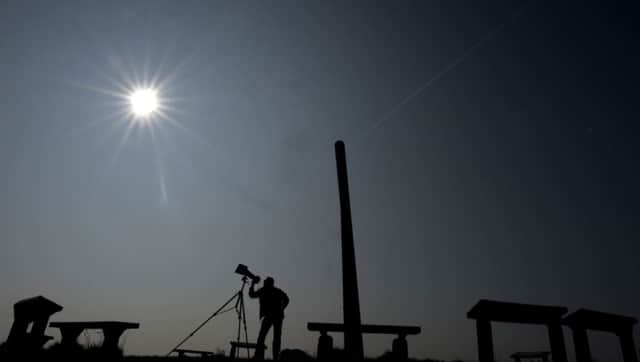

Forecasters believe the county may be less well-placed than Wales and the Midlands be get the best celestial show as the moon moves in front of the sun at around 9.30am, covering up to 97% of its surface.
Cloud is likely to cover all of the rest of the country, becoming thicker in the north - but no-one can predict when there might be a curtain-raising break in the cloud at any given location in the UK.
Advertisement
Hide AdAdvertisement
Hide AdA Met Office spokeswoman said: “Forecasting exactly where cloud will break and reform is really not scientifically possible. But it’s not as thick in the south as further north, so you’re more likely to see breaks in the cloud the further south you are.”
It is not unknown for a fleeting break in cloud to occur during an eclipse as the atmosphere cools.
This is one effect scientists at the University of Reading hope to capture as they conduct the largest ever eclipse weather experiment with the help of sky watchers throughout the country.
Advertisement
Hide AdAdvertisement
Hide AdDespite the cloud, the event is expected to have a significant impact on the National Grid with a predicted loss of 850 megawatts of solar power from the electricity supply network.
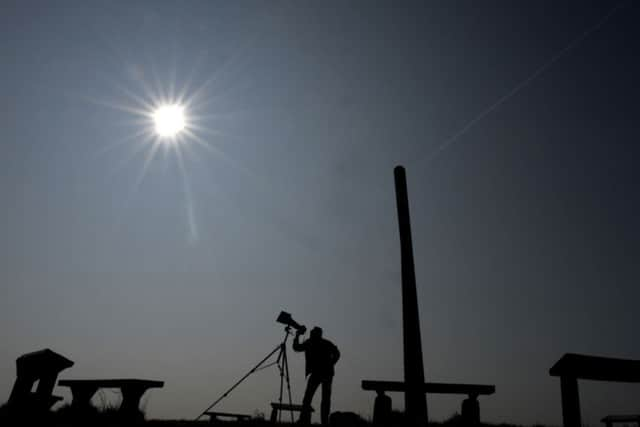

Around the UK the proportion of the sun covered by the moon will increase towards the north, ranging from 84% in London to 89% in Manchester, 93% in Edinburgh, and 97% in Lerwick in the Shetland Isles.
Times will also vary. In London, the eclipse begins at 8.24am, reaches its maximum extent at 9.31am, and ends at 10.41am. For observers in Edinburgh, the eclipse starts at 8.30am and peaks at 9.35 am.
The last solar eclipse of such significance occurred on August 11 1999, and was “total” - with 100% of the Sun covered - when seen from Cornwall.
Advertisement
Hide AdAdvertisement
Hide AdAnother “deep” partial eclipse visible in the UK will not occur until August 12, 2026, and the next total eclipse not until September 2090.
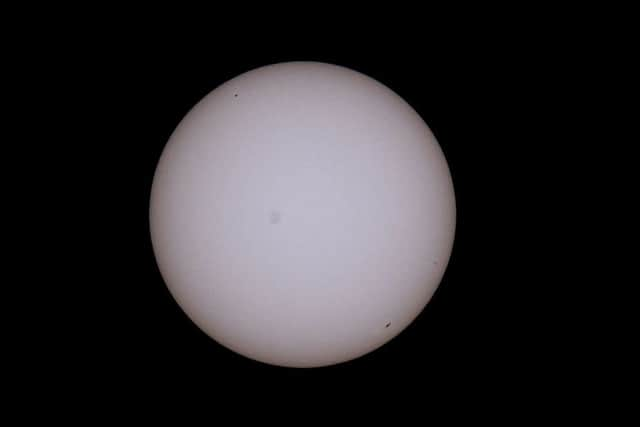

Tomorrow’s eclipse will produce a 100-mile-wide “totality” shadow path that crosses the North Atlantic and covers only two land masses, the Faroe Islands between Scotland and Iceland and the Norwegian archipelago of Svalbard.
Away from this path the sun is partly obscured. A partial eclipse will be visible across a large part of the northern hemisphere, including the whole of Europe, Greenland, Newfoundland, northern Africa and western Asia.
Robin Scagell, vice-president of the Society for Popular Astronomy (SPA), who will be travelling on the P&O cruise ship Oriana to witness the total eclipse, said: “We won’t experience totality in the UK but it will still be a memorable event.”
Advertisement
Hide AdAdvertisement
Hide AdHe added that it may be memorable for the wrong reasons if people fail to heed the numerous warnings from experts not to look directly at the sun.
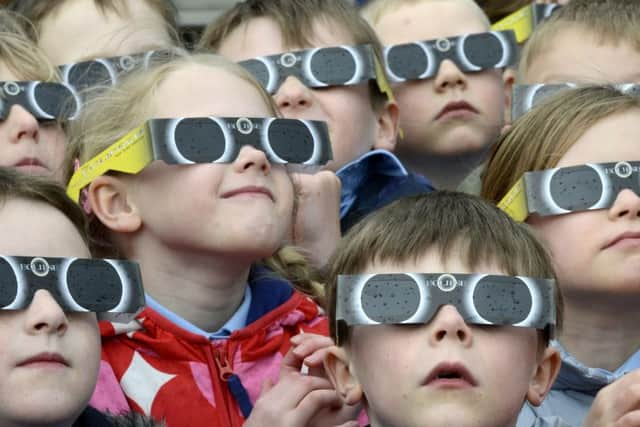

“Unlike every other eclipse of any size, this one takes place right in the middle of the rush hour,” said Mr Scagell. “It’s not the best time from a safety point of view.
“A partial eclipse is more risky by far than a total eclipse because people don’t realise that even looking at a thin sliver of Sun is dangerous.
“It’s absolutely true that there is a serious risk to people’s eyesight. If people can’t find a way to view the eclipse correctly then they shouldn’t look because they’re likely to damage their eyes.”
Advertisement
Hide AdAdvertisement
Hide AdDr Susan Blakeney, from the College of Optometrists, said: “You should never look directly at the sun and that applies when there’s a total or partial eclipse as well. This is because the radiation emitted by the sun is so powerful it may cause a solar burn of the retina.”
Together with the SPA, the Royal Astronomical Society has produced a booklet on how to view the eclipse safely.
Popular methods involve projecting an image from a telescope or binoculars on to a piece of white card, using a mirror to cast the image on to a wall, or making a pin-hole viewer from pieces of card or a cereal box that acts like a lens.
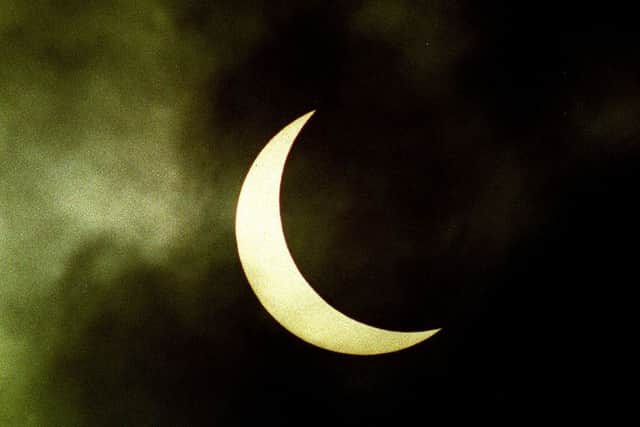

The latest weather forecast from the Met Office for 9am tomorrow shows the whole of the UK covered in cloud apart from a clearish band crossing the midlands from South Wales to the Humber estuary. Even here, there may be wispy cloud.
Advertisement
Hide AdAdvertisement
Hide AdTwo organised events are planned in London, where members of the public will have the chance to view the eclipse using specialist equipment.
One is being hosted in Regents Park by the Royal Astronomical Society and a group of amateur sky-watchers called the Baker Street Irregular Astronomers. The other takes place at the Royal Observatory, Greenwich, assisted by the Flamsteed Astronomy Society.
Several tour operators have organised “total eclipse” trips to the Faroe Islands and Norway.
Rosemary Sloggett, managing director of The Independent Traveller, which is taking 133 eclipse-watchers to the Faroe Islands in a specially chartered airbus at a cost of £2,500 per ticket, said: “The response has been absolutely enormous.. A lot of people travelling with us are experiencing their eighth, ninth or 10th eclipse. I think once you’ve seen one total eclipse it’s something that gets under your skin.”
Advertisement
Hide AdAdvertisement
Hide AdThe National Grid said the impact of the eclipse would be offset by large numbers of people leaving their homes to witness the event.
As a result, it was expecting a net 200 megawatt drop in demand at 9.30am, equivalent to the typical electricity usage of Glasgow.
Jeremy Caplin forecasting manager at National Grid’s said: “This loss of solar is entirely manageable and will be largely offset by demand suppression. We started planning for this in May last year and have a range of tools in place to manage any effects of the eclipse and balance the network, including demand side services and extra generation.”
The effect on solar power is likely to be greater in other parts of Europe which depend more than we do on the sun for electricity generation.
Advertisement
Hide AdAdvertisement
Hide AdSolar panels feed large amounts of electricity into the power grids of Germany, Italy and France. In the summer, up to 40% of Germany’s energy comes from its solar farms.
The last European eclipse occurred before the proliferation of solar power, so experts are somewhat in the dark over what will actually happen.
Scientists hope tomorrow’s eclipse will help them test their models of how solar farms are likely to behave.
Professor Alessandro Abate, from Oxford University’s department of computer science, said: “While the impact over the UK is not likely to be as substantial as for other European countries, this eclipse is a rare opportunity to challenge in a worst-case scenario the mathematical models we are developing to predict the behaviour of large populations of solar panels.”
Advertisement
Hide AdAdvertisement
Hide AdMembers of the public are being recruited by scientists at the University of Reading to help them study eclipse weather - changes in the atmosphere caused by the sun’s rays being temporarily blocked out by the moon.
The National Eclipse Weather Experiment (NEWEx) will draw on observational data recorded by an army of “citizen scientists” across the UK.
There are anecdotal reports of an “eclipse wind” - a breeze that appears as a solar eclipse reaches its peak - and breaks in the cloud appearing as the atmosphere cools.
Professor Giles Harrison, head of the Department of Meteorology at the University of Reading, who is leading the experiment, said: “This is the first big partial eclipse to happen in the UK since 1999, and the next one isn’t until August 2026, so this is a once-in-a-generation opportunity.
Advertisement
Hide AdAdvertisement
Hide Ad“By observing what happens on Friday we are effectively turning the skies of Britain into a giant weather lab, giving us a rare chance to see what happens when you ‘turn down the sun’.
“This will give us a precious insight into how the sun influences the clouds and wind, as well as more obvious effects, such as temperature. By improving our understanding of how the weather works, we’re better able to predict it, meaning scientists can further improve weather forecasts.”
The amateur observations will be combined with other data to provide the most detailed picture of the weather effects of an eclipse ever assembled.
Total solar eclipses can be seen somewhere on Earth every 18 months on average, but are considered rare events that recur at any given location just once every 360 to 410 years.
A solar eclipse takes place when the Earth, moon and sun are aligned and the moon’s shadow touches the Earth’s surface.